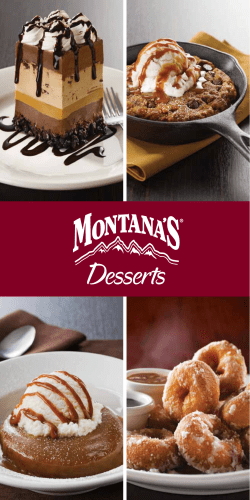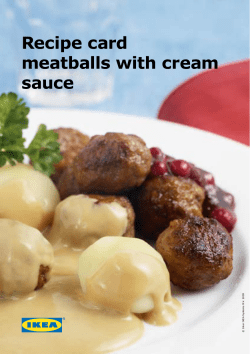
A Guide to Physical Characteristics of Cats www.petbehaviorsolutions.com
A Guide to Physical Characteristics of Cats www.petbehaviorsolutions.com 480-200-2011 Developed & Written by: Sam Kabbel, CPDT-KA, President Non Pedigreed Cat Breeds Domestic Short Hair Domestic Medium Hair Domestic Long Hair 1 Body Types Cobby – short body, broad, heavy boned and low on legs (usually low activity) Intermediate – Neither short bodied nor long bodied (usually medium activity) Oriental – long, lean and tubular (usually high activity) 2 Head Shapes Round head shape Rectangle head shape Wedge head shape 3 Solid Colors Black: jet black, (Ebony in some breeds) Blue: blue-gray; the dilute of black Brown: dark brown, called Sable/Seal in Burmese or Siamese Chocolate / Chestnut: medium-dark brown 4 Cinnamon: milk-chocolate / light brown Cream: buff (dilute of red) faint Tabby markings Fawn: "hotter" version of cream Lavender / Lilac / Frost: warm blue-brown, or pinkish frosty gray (dilute of chocolate) 5 Red: ginger colored, faint Tabby markings Seal: very dark brown White: blue, green, orange or gold, or odd eyed varieties (one blue and one green or gold), also green-eyed whites. White cats with blue eyes are more likely to be deaf than a white cat with gold or green eyes. Tabby Patterns All Tabbies have thin pencil lines on the face, significant marking around the eyes and the classic Tabby “M” on the forehead. Individual hairs are striped with alternate light and dark bands called “agouti”. 6 Classic Tabby: The "blotched" tabby pattern with dark stripes down length of back and dark swirls (bull's-eye) on sides of the body. Mackerel Tabby: Vertical unbroken thin lines instead of swirls. Narrow spine lines and "necklaces". The stripes should not break up into spots. Marble Tabby: Modified version of classic tabby with swirled, clouding effect. 7 Patched Tabby: Tabby pattern overlaid on a Tortie background e.g. deep red markings on red patched areas and black markings on brown patched areas. Spotted Tabby: Vertical bars of color are broken up into spots on the body. Stripes on leg, tail, and face. Spots should be round, rather than elongated and often vertically aligned. Spine lines should be broken into spots. 8 Leopard Tabby: Modified version of Spotted Tabby. Round spots, colored to root of hair, ideally the spots are randomly placed, not vertically aligned. Found in hybrid cats (e.g. Bengal) where the spotted pattern differs from the spotted tabby. Ticked Tabby: Ticked pattern with ticked body, tabby barring on face, legs and tail, at least one necklace, darker dorsal region, pale lower parts. 9 Tabby Colors Blue Tabby: cream/ivory-blue base, slate blue markings Brown Tabby: coppery-brown base, black markings Chocolate / Chestnut Tabby: cream base, milk-chocolate brown markings 10 Cameo / Red Silver Tabby: cream base, pale red markings Caramel Tabby: cream base, biscuit-color markings Cinnamon Tabby: pale brown base, cinnamon markings Cream Tabby: pale cream base, fawn markings 11 Fawn Tabby: pale pink-beige base, lilac markings Golden Tabby: tabby on golden undercoat (chinchilla/shaded) Lavender / Lilac Tabby: milky cream base, frosty gray markings 12 Red Tabby: pale red base, deep red markings Silver Tabby – silver base with black markings - mutation that removes the appearance of yellowish-tan pigmentation Piebald (white with any other color or pattern) and Tortoiseshell Patterns/Colors Bicolor– one to two thirds white with patches of color on the head and torso 13 Harlequin – mostly white with several large patches of color Tuxedo – black and white with white paws, chest and belly (may have some white on the face as well) Van – almost all white with patches of color only on the head and tail 14 Calico – orange and black with patches of white Dilute Calico – blue and cream patches Tortoiseshell – black and red mottled pattern Dilute Tortoiseshell – blue and cream mottled pattern 15 Torbie – Tortie with Tabby pattern Button – Colored cat with one or more white belly spots Mitted – white on paws Locket – small spots of white on the chest of an otherwise colored cat 16 Pointed Cats Pointed cats have darker points (face, paws, and tail) with a lighter color on the body. Pointed cats always have blue eyes. Colorpoint – unpatterned or solid points Tortie Point – Tortie patterns on points Lynx Point – striped patterns on points 17 Tortie Lynx Point – striped and Tortie patterns on points Distinguishing Pointed Colors Kittens are born creamy white with pink paw pads, noses and ears. Point color gradually develops over the first few weeks. Colors may not be fully developed until 1 year. Blue Point or Lilac Point? – Check the nose leather and paw pads. A Blue Point has slate gray, a Lilac Point has lavender pink. Blue Point or Blue/Cream Point? – Check the paw pads and nose leather. If the color is a mottled blue and pink, the cat is a Blue/Cream Point, not a Blue Point. 18 Seal Point or Chocolate Point? – Check the nose leather and paw pads. A Chocolate Point has cinnamon pink, the Seal Point has sealbrown. Seal Point or Tortie Point? – Check the nose leather and paw pads. If they are mottled seal brown and flesh/pink, the cat is a Tortie Point, not a Seal Point. 19 Smoke / Shaded Chinchillas – shaded cats in which the majority of the base of hair is light with 1/8 of the tip colored. Shaded – much of the base of the hair is light with 1/4 of the tip colored Smoke – half way up from the base is light with half of the tip colored 20 May be reproduced in its entirety for educational purposes. 21
© Copyright 2025













